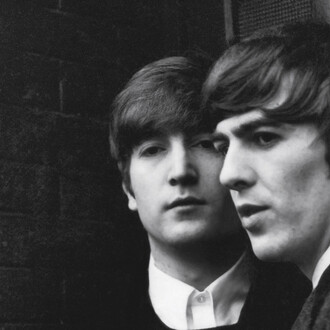Irving Penn (1917–2009), known for his iconic fashion, portrait, and still life images that appeared in Vogue magazine, ranks as one of the twentieth century’s most prolific and influential photographers. The first retrospective of his work in 20 years, Irving Penn: Beyond Beauty conveys the extraordinary breadth and legacy of the American artist and will be on view at the Frist Center for the Visual Arts from February 24 to May 29, 2017.
Organized by the Smithsonian American Art Museum and Merry Foresta, the museum’s curator of photography from 1983 to 1999, the exhibition contains more than 140 photographs, including the debut of 100 photographs recently donated by The Irving Penn Foundation and several previously unseen or never-before-exhibited photographs. Penn’s renown as a fashion photographer is matched by the recognition of his innovative and insightful portraits, still lifes, nudes, and travel photographs. The exhibition features work from all stages of Penn’s career, including street scenes from the late 1930s, photographs of the American South from the early 1940s, celebrity portraits, fashion photographs, and Penn’s stunning late color work.
In a career that spanned nearly 70 years, Penn’s aesthetic and technical skill earned him accolades in both the artistic and commercial worlds. He was a master of both black-and-white and color photography, and his revival of platinum printing in the 1960s and 1970s was a catalyst for significant change in the art world. He successfully crossed the chasm that separated magazine and fine-art photography, narrowing the gap between art and fashion. “Penn adopted a workmanlike approach to making pictures,’” says Frist Center Chief Curator Mark Scala. “But even in his most commercial images, he upended convention with a penchant for formal surprise.”
Schooled in painting and design, Penn eventually chose photography as his life’s work. His portraits and fashion photographs defined elegance, yet throughout his career he also transformed mundane objects—storefront signs, food, cigarette butts, street debris—into memorable images of unexpected, often surreal, beauty.
The exhibition is arranged in reverse chronology, allowing viewers to peel away layers of history by moving from the present into the past. In Bee, made for Vogue in 1995, Penn reflects the decadence that permeated much fashion photography of the nineties. Penn’s equally assertive portraits show cultural figures such as dancer Rudolph Nureyev, singer Leontyne Price, and painter Francis Bacon in intimate close-up. “Rather than containing clues about their creative enterprise, the portraits allow nuanced facial expressions to convey deep introspection,” says Scala. “And among the most psychologically charged of Penn’s images are his ‘corner portraits.’” Taken in the late 1940s, these photographs depict artists, writers, and others posed in a constructed corner, often in positions suggesting discomfort and claustrophobia.
His earliest works—urban street scenes from the late 1930s and photographs of the American South made during a road trip from New York to Mexico in 1941–42—show Penn to be attuned to the photography of his own time, especially the documentary approach of Walker Evans and the New York Photo League. At the same time, they echo Surrealism’s fascination with provocative juxtaposition and symbolic meaning.















